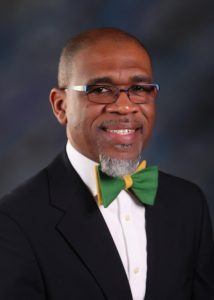Personalizing the Learning in McComb, Mississippi
CompetencyWorks Blog

McComb is a town of about 5,000 households located an hour south of Jackson in the land that was originally cared for by the Choctaw. Getting there was a bit of an adventure, as I flew into New Orleans on the day of a freezing rain that closed all the highways in the region. Thus, I approached McComb through the backroads of Louisiana, which once again reminded me that although the majority of the American people live in urban and suburban areas, the country continues to be deeply rural.
McComb School District came to my attention through the Education Reimagined network. McComb is on a path toward personalized learning (they also use the term student-centered learning synonymously). They have established six pillars of student-centered learning:
- Scholars are grouped by readiness
- Scholars assume ownership for their learning
- Scholars work at their own pace
- Scholars show evidence of mastery
- Scholars are provided with continuous feedback
- Teachers are practitioners
They are one of the few districts implementing personalized learning, competency-based education, and blended learning simultaneously. If we are able to integrate these three strands into one comprehensive approach, we may be able to accelerate the rate of transformation from traditional approaches to the next generation of education. Thus, we can learn a lot from McComb.
Dr. Cederick Ellis, Sr, superintendent of McComb, is driven by a passion to make things better for the children of McComb. “Now our children aren’t going to just hope for a better future; with personalized learning, they are going to have the skills to bring it about.” He outlined the theory of action as, “If we can meet scholars where they are, then all scholars will experience some level of success even if they aren’t on grade level. Once we have a system that is supporting all scholars to make progress, then, at some point, perhaps in two to three years, all scholars will be on track. We want scholars in personalized schools to be producing growth rates of 1.5 to 2 levels per year.”
Ellis explained that based on the state’s accountability system, McComb has been considered just about average. He said, “Average isn’t good enough for us as a community. And delivering curriculum aimed at the average isn’t good enough for our children. We can’t continue to use an education system that only educates our children at the average. We know from the research by Todd Rose that the idea of using the average doesn’t work. We began to imagine a different way of educating our scholars. We embarked on a journey of personalized learning with the vision of reaching all of our scholars.”
In its first two years of implementation, McComb has established a new personalized learning elementary school, created a personalized kindergarten at its early childhood center, and begun the conversion of the other elementary school. Still to go is begin the conversion of the two middle schools grades 4-6, a junior high school grades 7-8, and a high school. Ellis emphasized, “Once our scholars experience personalized learning, we don’t want to return them to the traditional system. Thus our job is to have the system ready for them.”
A few of the things districts and schools can learn from McComb:
- Community engagement in strategic planning
- Personalized approach that emphasizes student agency and ownership in their learning
- Use of pilot schools
- Implementing a personalized, competency-based, and blended approach at the same time
Like all competency-based schools, McComb is operating within a dual system. They are trying to meet students where they are while also covering the curriculum. After visiting competency-based schools across the country, I still can’t tell if this is going to push us to develop strong instructional strategies that can accelerate learning in a meaningful way or if it is truly an exercise in futility and absurdity. However, teachers everywhere who understand the limitations of the traditional system are going to be expected to operate in a dual system until our state policymakers read up on the science of learning and shape policies that are aligned.
I do want to bring one thing to your attention as you read this series based on one part-day site visit. McComb is moving rapidly, but is only in their third year of implementation. I was able to learn about their personalized learning approach and roll-out strategy. But there are things I didn’t see much of that one would hope to see in well-developed systems, such as performance-based tasks and assessments, student-led inquiry, and intentional strategies for building the fundamentals of lifelong learning (See Building Blocks for Learning). It may be that these pieces are being put into place, that they are on the list of important things to do, or that they will be part of future iterations. What is important is to read this series as a journey and understand what McComb is doing and how they are moving forward. They’ve done an amazing amount of work in two years in laying the foundation of personalized learning, implementing a station rotation blended learning model, and putting many of the elements of competency-based education in place. So please be learners along with them.
Further reading about McComb School District:
Read the Entire Series:
- Post 1 – Personalizing the Learning in McComb, Mississippi
- Post 2 – McComb’s Six Pillars of Student-Centered Learning
- Post 3 – McComb’s Strategic Planning Begins with the Community
- Post 4 – Piloting Change in McComb
- Post 5 – Empowering Scholars at McComb’s Summit Elementary
- Post 6 – Starting with the Kindergarteners in McComb
- Post 7 – Starting the Journey to CBE at Otken Elementary School
- Post 8 – Supporting Practitioners in McComb